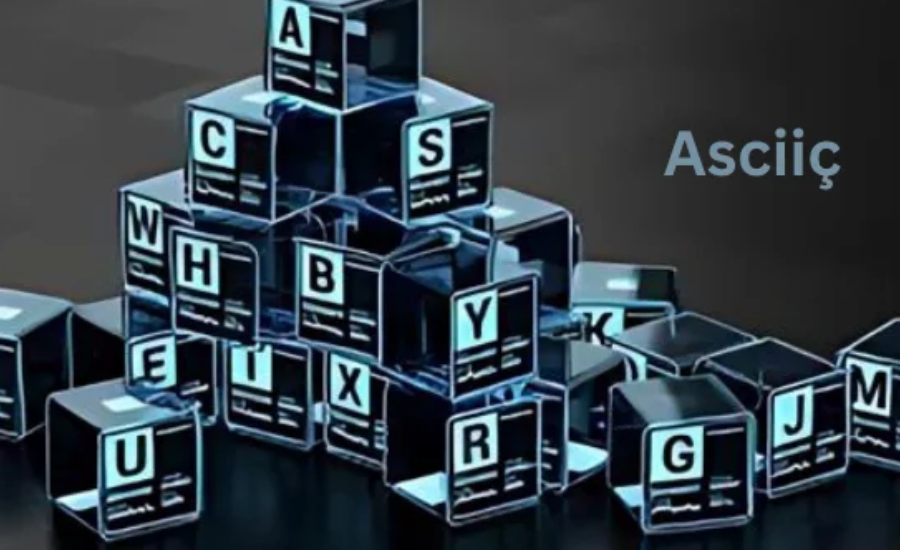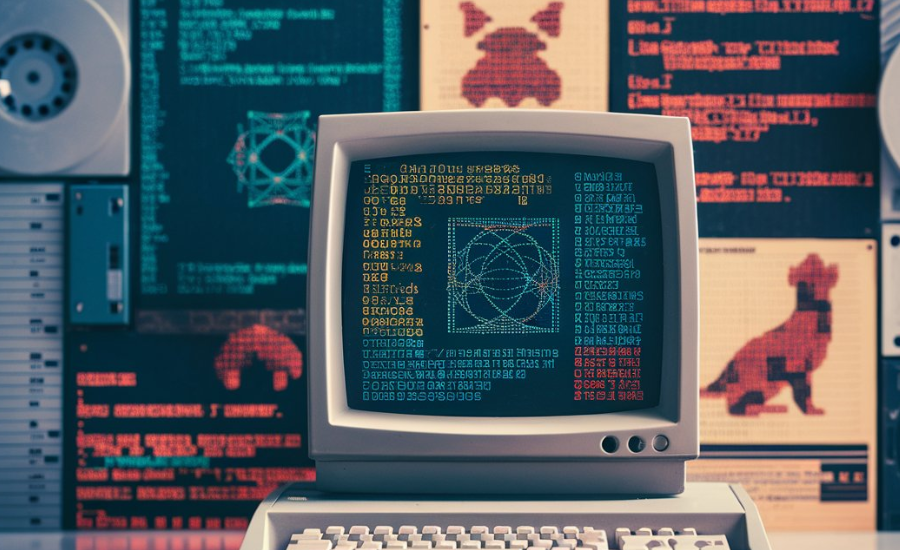One of the earliest and most influential encoding systems is ASCII (American Standard Code for Information Interchange).. In this blog post, we will delve into the world of ASCII, exploring its origins, structure, applications, and its enduring relevance in modern computing.
What is ASCII?
ASCII, which stands for American Standard Code for Information Interchange, is a fundamental character encoding system used to represent text in electronic devices. This standard plays a crucial role in digital communication by enabling the precise encoding of alphanumeric characters and symbolic information. ASCII simplifies the process of translating textual data into a format that computers and other electronic devices can process and understand. By defining a set of numerical codes for each character, ASCII ensures consistent and accurate representation of text across different systems and platforms. This encoding scheme has been instrumental in facilitating seamless information exchange in the digital realm.
The History of ASCII
. Its primary goal was to standardize text encoding and representation, addressing the fragmented and incompatible character sets that were prevalent at the time. By consolidating various character encoding schemes into a unified standard, ASCII provided a consistent method for representing text across diverse computing systems. This standardization facilitated seamless communication between different platforms and systems, establishing ASCII as a foundational text encoding scheme that continues to be integral to digital information processing.
Structure and Design of ASCII
ASCII, which stands for American Standard Code for Information Interchange, utilizes a 7-bit binary encoding scheme to represent characters. This system supports a total of 128 unique values, each corresponding to a specific character or control function.
The elegance of ASCII lies in its simplicity and efficiency. By using a 7-bit structure, it efficiently allocates a fixed amount of data to each character, making it well-suited for the computational limitations of early computer systems
ASCII Character Set
- Printable Characters (32-126): This range includes a diverse array of alphanumeric and punctuation characters. It consists of:
- Letters: Both uppercase (A-Z) and lowercase (a-z) letters, which are essential for writing text in various languages.
- Digits: The numbers 0 through 9.
- Space: The space character, which separates words and contributes to text readability and organization.
Applications of ASCII
This encoding standard facilitates seamless local data exchange and simplifies porting between different systems.
2. Programming: In the realm of programming, ASCII is instrumental in representing basic English characters and symbols across numerous programming languages, such as C and Python. Its use in code allows developers to manage text data efficiently and consistently across various programming environments.

. Its use helps maintain clarity and uniformity in data transmitted between different systems.
ASCII in Modern Computing
ASCII remains integral in various applications, including text file formats and data communication protocols.
Many contemporary character encoding standards, including Unicode, maintain backward compatibility with ASCII, allowing for seamless integration of older text data into newer systems. This enduring compatibility underscores ASCII’s ongoing relevance and utility in the evolving landscape of digital technology.
Advantages of ASCII
3. Efficiency: ASCII’s compact representation uses minimal memory and processing power
Limitations of ASCII
1. Limited Character Set: ASCII is based on a 7-bit encoding scheme, which supports only 128 distinct characters.

2. Lack of Multilingual Support: ASCII primarily accommodates English characters and does not support the diverse range of characters found in other languages. This restriction hinders its usability for international communication and limits its application in global contexts where multilingual text representation is essential.
Extended ASCII and Its Evolution
This enhanced version expands the character set to include 256 unique symbols, accommodating a broader range of characters and special symbols..
Unicode: The Future of Character Encoding
Unicode: As technology advanced, Unicode emerged as the next-generation character encoding standard designed to encompass a vast array of characters from virtually all writing systems around the world. Unicode provides a universal character set with over a million unique codes and offers variable-length encoding options through formats like UTF-8. This extensive encoding capability allows Unicode to support a diverse range of languages and symbols, making it the preferred standard for modern computing.
ASCII Art: Transforming Characters into Creativity
ASCII Art is an artistic form that uses characters to craft visual representations. By arranging letters, numbers, and symbols in specific patterns, artists can create detailed and imaginative images. This creative technique gained prominence in the early days of computing and remains a beloved method for digital expression.
ASCII in Networking Protocols
ASCII Characters in Network Protocols: ASCII is integral to various networking protocols, where it facilitates the representation of text data. he use of ASCII in these contexts helps maintain clear communication and interoperability in digital environments.
Commonly Used ASCII Codes and Their Functions
- 32 (Space): Represents a blank space between characters.
- 33 (!): The exclamation mark, commonly used for emphasis or as a punctuation mark.
- 65-90 (A-Z): Represents uppercase letters from ‘A’ to ‘Z.’
- 97-122 (a-z): Represents lowercase letters from ‘a’ to ‘z.’
- 48-57 (0-9): Represents digits from ‘0’ to ‘9.’
- 13 (CR – Carriage Return): Moves the cursor to the beginning of the line.
- 10 (LF – Line Feed): Moves the cursor down to the next line.
The Future of Character Encoding
While Unicode has become the prevailing standard for encoding characters in both human and computer languages, ASCII continues to be a foundational element in the evolution of modern computing. As technology progresses and new encoding standards emerge, ASCII’s fundamental principles will persist as a cornerstone for text representation and transmission.
FAQS
Q: What is ASCII?
A: ASCII, or American Standard Code for Information Interchange, is a character encoding standard used to represent text in computers and electronic devices. It uses numerical codes to translate characters, symbols, and control commands into a format that machines can process.
Q: Why was ASCII developed?
A: ASCII was developed to standardize text encoding across different computer systems.
Q: How does ASCII work?
A: ASCII uses a 7-bit binary code to represent 128 characters, including letters, numbers, punctuation marks, and control characters.
Q: What are control characters in ASCII?
A: Control characters (0-31) are non-printable codes used for text formatting and control functions. Examples include carriage return (CR), line feed (LF), and null character (NUL).
Q: What are printable characters in ASCII?
A: Printable characters (32-126) include letters (both uppercase and lowercase), digits (0-9), punctuation marks, and the space character. These characters are visible and used for writing text.
Q: How has ASCII evolved?
A: To address the limitations of ASCII, Extended ASCII was introduced with an 8-bit encoding scheme, allowing for 256 characters.
Q: What role does ASCII play in modern computing?
A: Despite being superseded by more advanced encoding systems like Unicode, ASCII remains foundational in text representation and data communication.
Conclusion
ASCII, as one of the earliest character encoding standards, has had a profound impact on digital communication and computing. Its straightforward design facilitated early text processing and communication, laying the groundwork for more complex encoding systems. As technology evolves, ASCII’s foundational principles remain a testament to its enduring significance in the digital world, demonstrating its lasting influence on how text is represented and transmitted across diverse platforms and systems.
Read More: US Wire Magazine
